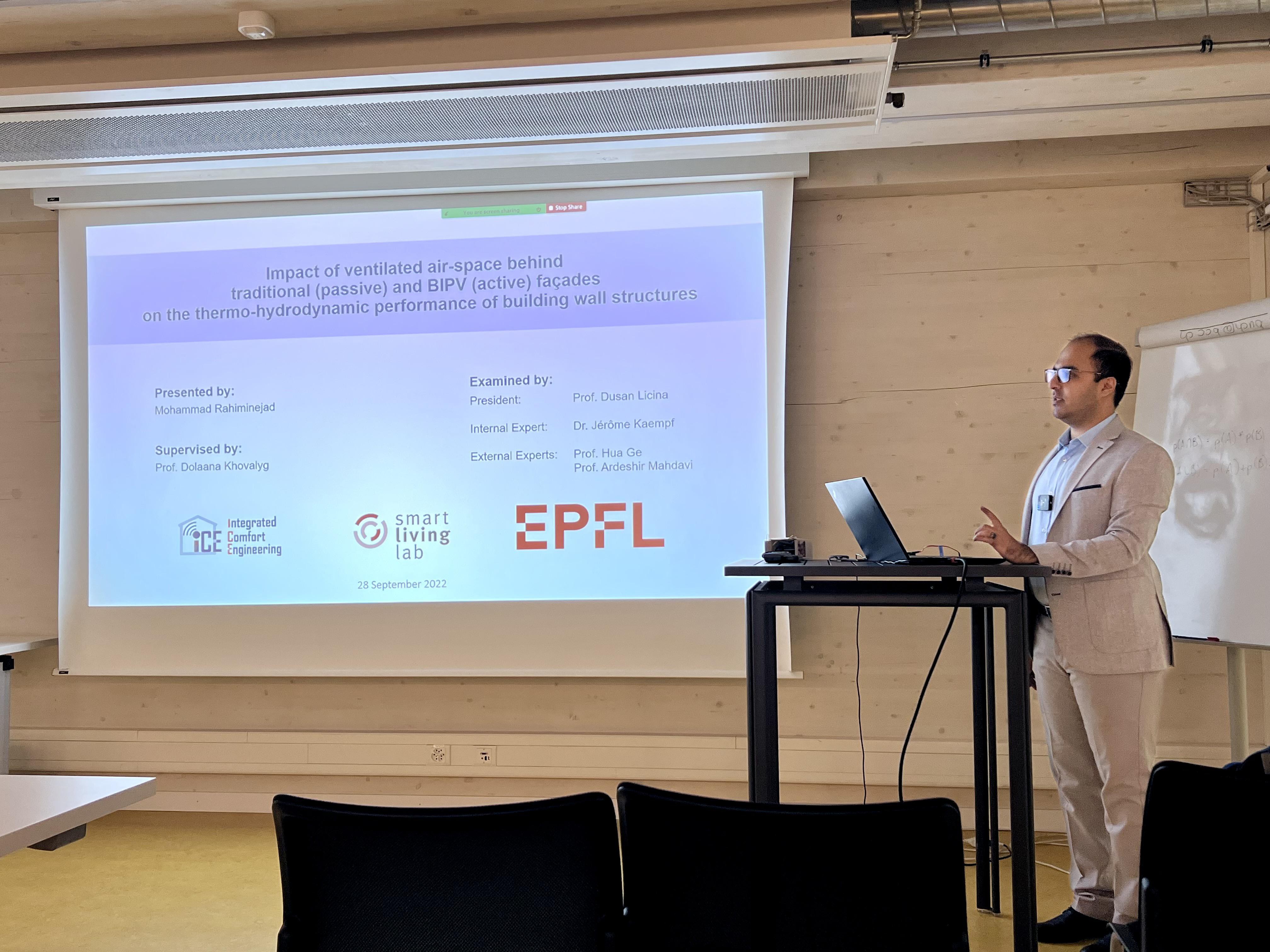The first Ph.D. graduate of the ICE lab - Dr. Rahiminejad

Dr. Rahiminejad © 2023 Ryan Liao
A four-year-long Ph.D. journey of Mohammad Rahiminejad at EPFL culminated with his public presentation on 28 September 2022. He earned his Ph.D. degree in Mechanics with the work titled "Impact of ventilated air-space behind traditional (passive) and BIPV (active) façades on the thermo-hydrodynamic performance of building wall structures".
Ventilated cavities in wall assemblies of buildings have been essential for creating moisture-resilient constructions by allowing airflow within the air gap to promote drying. In addition to that, the airflow in the cavity can contribute to the overall performance of the wall structure. Similar to the wall assemblies with traditional claddings, photovoltaic (PV) panels in the Building-integrated photovoltaic (BIPV) façades can be separated from the building envelope by an air gap that is created for ventilation purposes. In Mohammad's study, the impact of the thermo-hydrodynamic behavior of the airflow in the naturally ventilated cavity behind traditional (passive) and BIPV (active) façades on the performance of the entire wall assembly was numerically and experimentally investigated.
The results of his study show that the thermo-hydrodynamic behavior of the airflow behind external claddings is a complex phenomenon that is simultaneously influenced by several factors, including the outdoor and indoor conditions, and geometrical and thermal properties of the wall layers. Based on the literature reviewed in this study, the stack effect and the wind effect were the two major mechanisms driving the airflow in ventilated air-spaces. The results of the steady-state analysis revealed that, under some conditions, the air-space could be able to resist the heat flux passing the wall assembly even more than the external cladding. Moreover, the uncertainty analysis shed light on the fact that accurate instruments were needed to reduce the uncertainty of measuring the thermal resistance of the cavity. The results of the transient numerical analysis showed that the overall performance of a ventilated wall structure dynamically changes depending on the diurnal variation of the outdoor/indoor conditions. Moreover, it was shown that replacing the passive cladding with an active façade could strongly affect the hydrodynamic and thermal performances of the entire wall assembly, which highlights the importance of analyzing the active ventilated wall structures to transition toward modern building skins. The results of the experimental measurements pointed out that the airflow in the ventilated cavity had a major impact on the yearly performance of a wall structure; therefore, further investigations would be required in future studies to evaluate the possibility of controlling the air change rate in the cavity using a fan-assisted system to boost the overall efficiency of the wall assembly.



